Living in the wilderness or off-grid is a complete change in your lifestyle. Although it is not easy, leaving the stress of society as we know it, and creating a life built with your own efforts can be very satisfying.
Before you take the leap though, there is a lot to learn. This article will provide a general overview of some important things to consider.
Educating yourself is the most important first step.
Table of contents
- Preparing to Live in the Wilderness
- Taking Classes
- Living in the Wilderness – Supplies
- Packing List
- Purifying Water and Keeping it Clean
- Signaling for Help
- Getting in Shape
- Living in the Wilderness – Setting up Camp
- Living in the Wilderness – Starting a Fire
- Considering and Meeting Your Basic Needs
- Living in the Wilderness – Bathroom
- Learn How to Walk in a Straight Line
- Living in the Wilderness – First Aid
- Final Tips
- Additional Resources
- Related Articles
Preparing to Live in the Wilderness
Living in the wilderness will require you learn survival skills based on the conditions in the place you want to live. Before anything else, determine the climate, available resources, and potential hazards in your chosen environment.
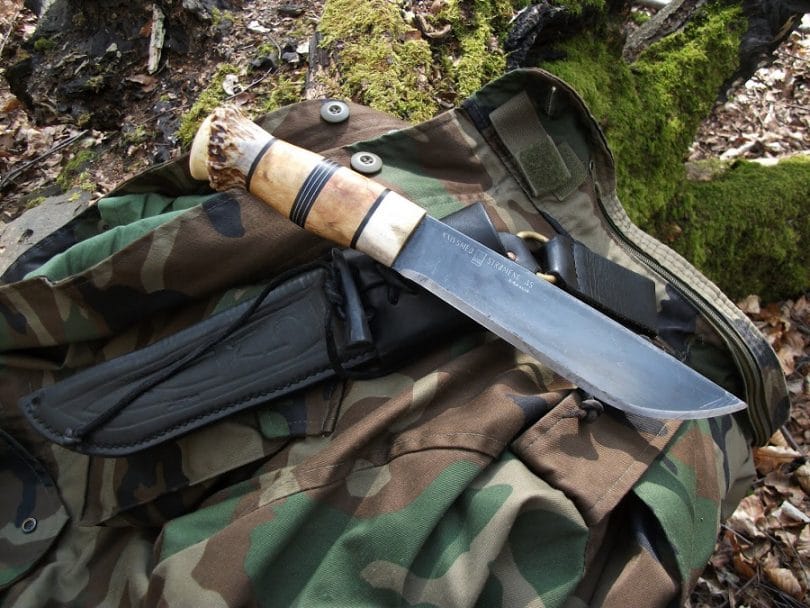
Remember, there is a big difference between living in the woods of mainland USA, the subzero Alaskan tundra, and the Sahara desert. Survival preparation will be unique depending on the adaptations and skills for different regions.
First, consider a few basic questions.
- What time of year will be the easiest to start?
- What types of supplies will you need?
- Will you have access to civilization?
- How will this new home compare to what you are used to?
In addition, you’ll need maps of the place you’re planning to live. Basic knowledge of navigation, and map and compass skills, are essential to avoid getting lost in a new area.
Taking Classes
Before heading into the wilderness, make sure that you have the survival skills you need. Take some formal classes to improve your skills and ability to survive.
It’s always a great idea to reach out to wilderness groups or adventure organizations in your area for suggestions and guidance.
Plant identification classes from experts in your area are useful. Determining what is edible, poisonous, and can be used for medicine will be very important.
Check out this article on edible plants for a good starting point.
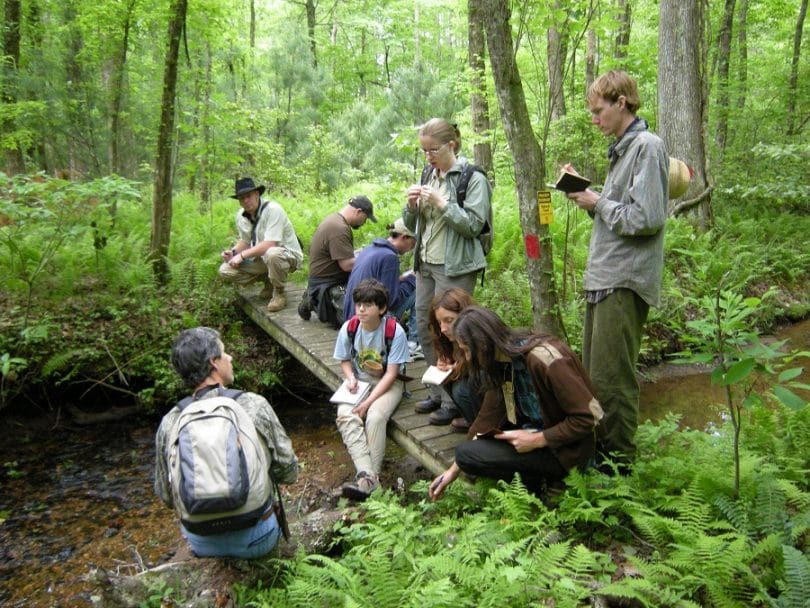
Regardless of the classes, you decide to take, remember that preparation and information are key to avoiding lethal mistakes in the wild. With proper training, you will not only be able to survive but to build a more comfortable life.
Living in the Wilderness – Supplies
If you want to move fast and light in an emergency situation, plan to use one backpack. This backpack should fit everything you’ll need in the wilderness for short-term and longer-term survival.
Packing what you need without carrying too much in this situation takes planning.
Your backpack needs to be sturdy, and easy to carry as you travel. You will be foraging as you move, and potentially moving fast.
You also want to make sure the backpack is large enough to carry what you need, organized, and able to keep your supplies and belongings protected and dry.
Packing List
Below are a few basics.
- But netting
- Rope
- Knives
- Pistol or rifle
- Flashlights and lanterns (with extra batteries and oils)
- Vitamin C source
- Blankets
- Water filters
- Matches
- Fire steel
- Ax
- Area maps
- Compass
- Mirrors,
- Flares
- Whistle\ (for quick rescue just in case)
- Sewing and tool kit
- Radio transmitter or signal beacon
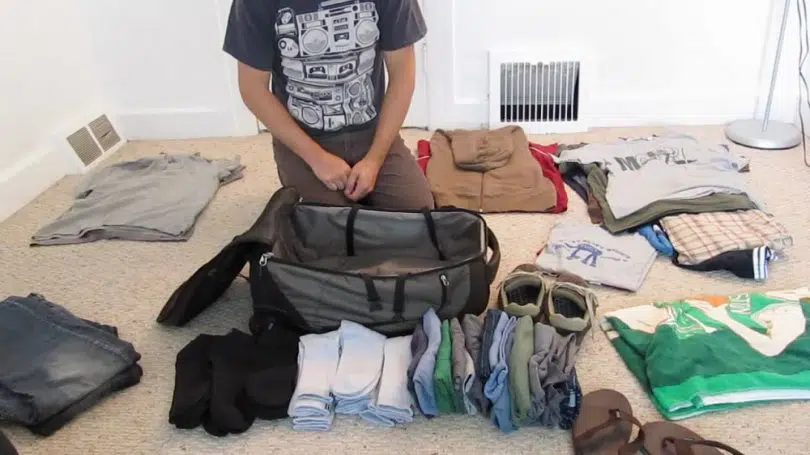
Remember to bring the correct type of clothes. In general, there are three things to keep in mind.
- First, remember that cotton is rotten – Cotton clothing will not retain warmth when it gets wet. You cannot depend on cotton clothes to survive the wear and tear of outdoor use. Instead, pack clothing that can survive the wild, like clothing made specifially for hikers, fishermen, military, etc.
- Wear layers – Bring layers so you can adjust to temperature and weather changes. Take extra layers off when you feel hot, and wear more when you’re cold. Always have the right clothes to stay warm and dry.
- Merino wool is a great option for wilderness survival – Wool won’t get wet easily and will keep you warm even when it is damp.
Purifying Water and Keeping it Clean
It is essential to have clean water to keep you safe from water-borne diseases. Unfortunately, you can’t be sure that water from a stream or lake in the wild is clean and free of debris.
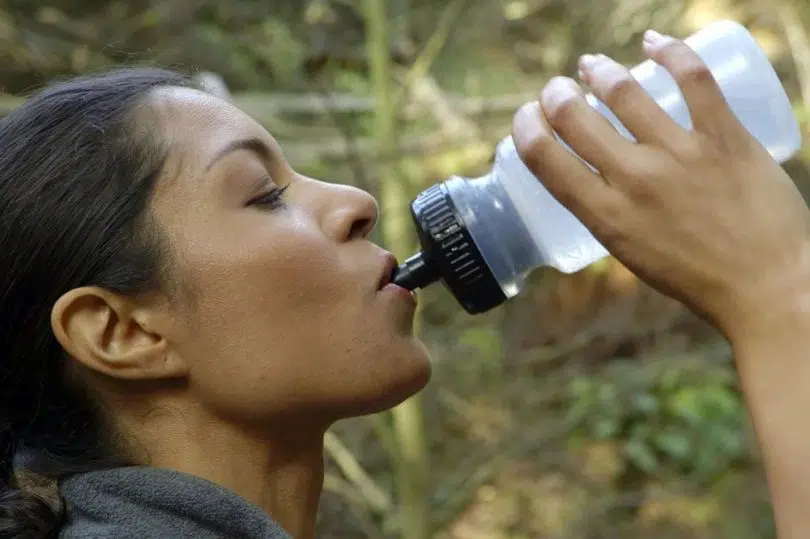
The easiest way that you can purify water is to boil it for at least 10 minutes. See our article on how boiling kills harmful bacteria here. In addition, you can use iodine tablets to purify water.
There are many options for making sure you have clean drinking water, and several ways to purify water in emergency situations if you don’t have commercial filters and chemicals.
See: Best Gravity Water Filter: The Most Effective Water Filtration/Purification Kits
Signaling for Help
There may be situations where you are not prepared, or something unexpected comes up and you need help.
Make sure you can signal for help!
Bring tools to signal with such as mirrors or whistles, along with devices to start emergency fires like lighters or starter sticks.
Knowing how to start a signal fire is important – just as important as having it for warmth.
Getting in Shape

Before heading into the wilderness, make sure that you are in good physical condition. Focus not only on muscle building and strength but also endurance and cardiovascular health. You’ll need all aspects of fitness to survive.
Living in the Wilderness – Setting up Camp
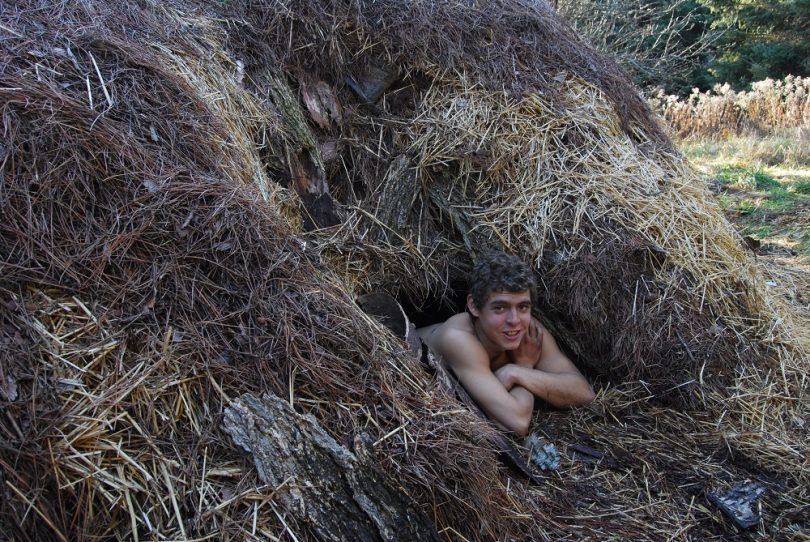
Find a secure place to sleep, somewhere close to a water source but far from animals and other dangers. Set up camp on stable ground, far from drop-offs and watery or rocky areas.
Create a basic structure for sleeping that will allow you to stay out of the elements. Spend more time building this shelter if you plan to stay out for a long period of time.
Generally, you never want to sleep on bare ground. Create some sort of flooring in your shelter out of leaves, hemlock bows, or hay.
Living in the Wilderness – Starting a Fire
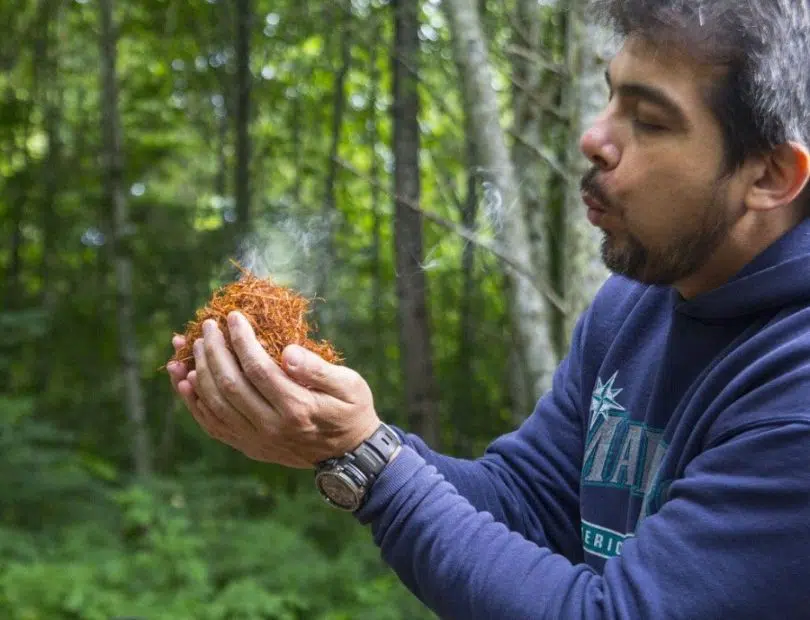
Build a fire at camp to stay warm and cook your food. When cooking your food, wait until the fire has burnt down to very hot embers. This will avoid burning your valuable food supplies.
Birchbark, hemlock bows, and other dried wood sources are great for starting fires. If remaining unnoticeable is important, remove bark and debris from your wood, and use the driest wood you can find.
Never leave your fire unattended.
Considering and Meeting Your Basic Needs
In the wild, you’ll need to know how to trap, gather, and hunt. These will be essential skills needed for getting food. Edible plants will be another valuable food source.
When in the wild, do not eat anything unless you know for sure that it is edible. Use a guidebook about local flora and fauna to distinguish different plants.
Additionally, you’ll need a storage system to keep your food away from contaminants and scavengers.
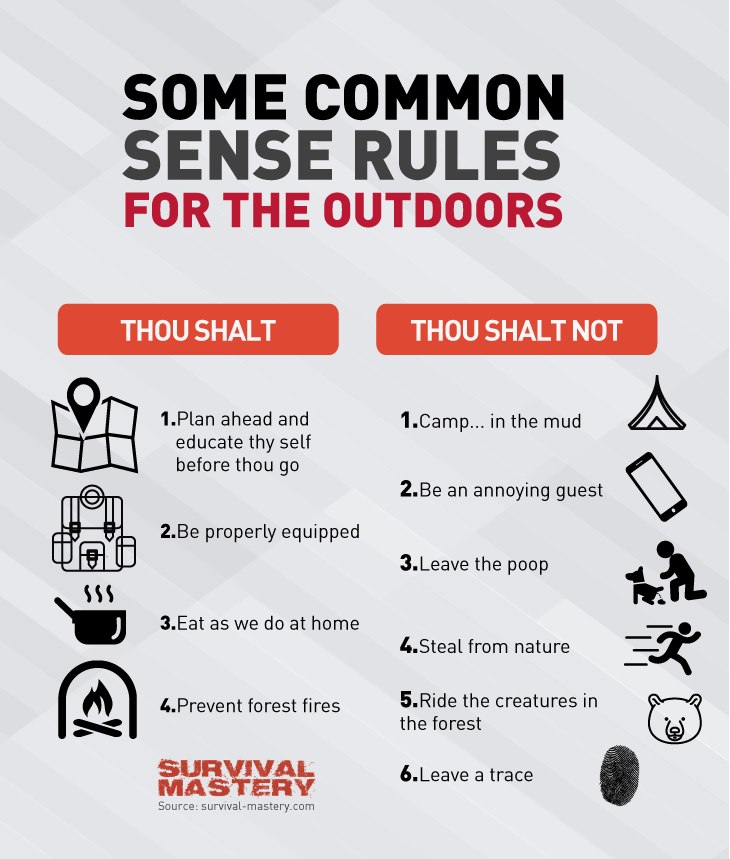
Mother nature offers everything you need, you just have to learn where to find it. In short, you will be able to enjoy your stay in the wild if you are able to adapt to the terrain and environment where you live.
Living in the Wilderness – Bathroom
Additionally, you’ll need to know how to take care of your business (use the toilet) in the woods. Make sure that your toilet is not near a water source. Find or dig a cathole at least six inches deep for a temporary toilet (one-time use).
One of my favorite videos on how to poop in the woods is a video done by Andrew Skurka. Andrew is a long-distance hiker and professional guide. He offers some sound advice.
Learn How to Walk in a Straight Line
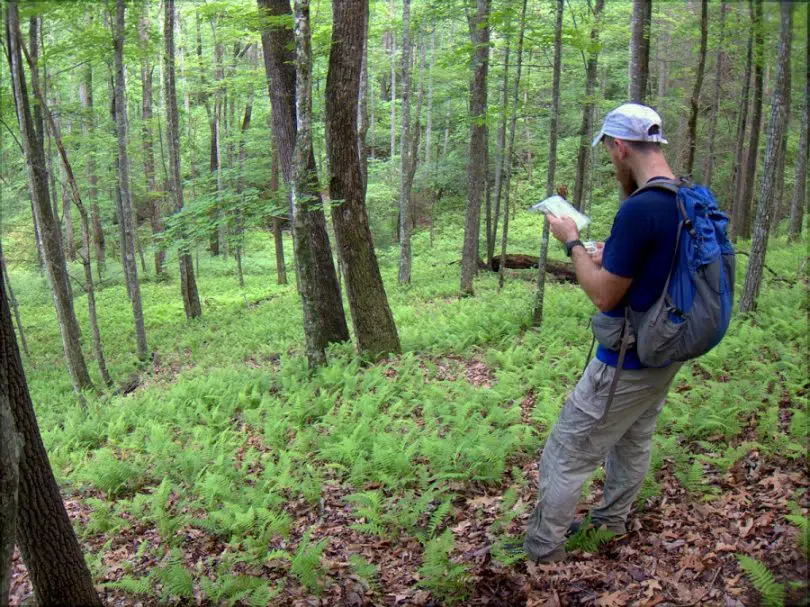
When in the wild, it’s important to have a good sense of direction so you can always find your home. If you leave your shelter, know how to properly navigate.
Use back marking signs, the sun, moon, and trees to navigate.
Living in the Wilderness – First Aid
Before leaving, you need to learn basic first aid skills.
You’re going to be far from civilization, with no access to a Doctor or many medical supplies. Know how to take care of yourself in emergencies.
Basic skills, such as caring for wounds and splinting broken bones, may save your life. Carry a reliable signaling system will also be important if you need to be found in an emergency.
Final Tips
If you enjoy living in the wilderness and want to stay long-term, you’ll want to learn how to garden and raise your own food. It will also be important to protect your home from the elements and to learn how to collect and store all of your food.
Staying warm and dry, building stoves, chimneys, etc. – these are just a few of the things that will be important to learn.
Don’t make the decision to live in the wilderness overnight. Take time to prepare and consider the pros and cons. Preparing to live off-grid will take a lot of thought, planning and education to learn the skills you need.




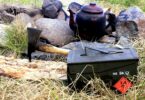
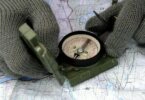
You don’t have to do it alone; humans were able to survive by banding in groups, so I’d find a group of survivalists to join or create my group. It only increases your chance to survive longer.
That’s a great idea, Marco. In fact, the wilderness adventure away from home will be more entertaining when you engage nature as a group.
I can’t help noticing that the first image is of a makeshift house behind a man who’s supposedly living in the wilderness. Is this legal? Won’t putting up a shelter or any other makeshift building in the wilderness some sort of trespassing?
Usually, one has to confirm whether or not the land is private or public.
Ok as someone who has lived in the woods since October 3, 2001, I can say a great deal on this subject. First question? IS it legal? No it is sadly not legal in any sense of the statement, the only case it is ok is when you have the permission of the land owner of land in private ownership with the consent of the county you live in. I am saying this because – even if the land owner giver permission – the county can still come on the land and evict you citing nuisance laws or housing violations due to laws preventing primitive structures from being constructed. And as for public land, even BLM land (if there is a difference) defines any situation where you go out and live in the woods as “squatting” which is illegal and is a fineable offense. As such the key to living out in the woods is to go as far out into the woods as you can say 100 miles to 300 miles from anyone and everyone. How I have done it is not an easy task, even more so now that I am 42. You must know several skill sets to make it work. I had to learn foraging – this is great for finding edible greens, mushrooms, berries, roots and various other goodies. Gardening is a great skill to have if you can combine it with permaculture. i have used several streams around my hideout to cultivate crops that serve a purpose to attract meat and are great to store. I had to learn to make a root cellar and shelter hiding it by using natural features like moss and grass to hid the structure. Green building is great if you understand your structure will eventually melt into the land as they are recyclable. Now the skill group to learn is how to trap and hunt these are your bread and butter. You learn to use all the animal and its parts. I may be looked at weird when I sell skins made into things but it helps. I blacksmith some things and I need cash still for supplies from time to time in case of failed crops or loss of meat. Leather craft is a good one but you have to know how to skin and tan a hide. But no matter what you choose to do – learn skills needed – read and practice. Learn animals behaviors. Learn to track. Develop your inner wolfs forest sight. Learn the language of the woods. If you can tell when there is danger near you will be in good standing too. The birds can warn you if there is something near by. Learn the 3 c’s, learn that is the key!